Blog » Coaching Models and Techniques » Breathwork: A Definitive Guide
Breathwork: A Definitive Guide
This is the Ultimate Guide to Breathwork.
Breathwork can be practiced by anyone of any age in any profession.
It can be extremely beneficial in your personal life too if used well.
So if you want to :
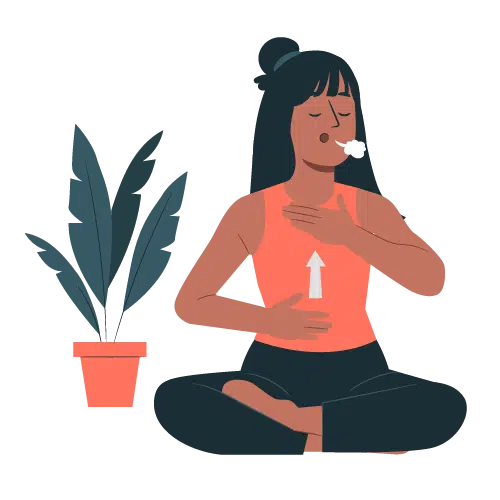
- Learn about the different types of breathing techniques.
- How to use and implement them effectively.
- Learn about the pros and cons of breathwork.
- Know about how breathwork has gone completely mainstream
- Learn about Breath Coaching.
Then you’ll love this guide.
Let’s get started!
Don’t have time to read the whole guide right now?
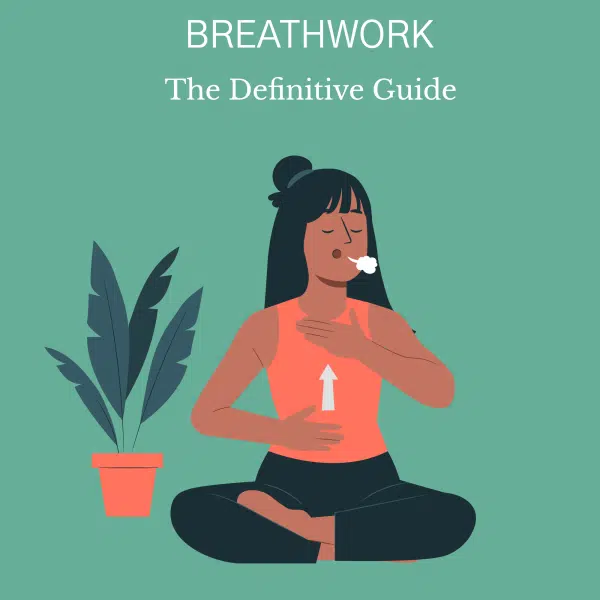
No worries. Let me send you a copy so you can read it when it’s convenient for you. Just let me know where to send it (takes 5 seconds)
Yes! Give me my PDFChapter 1:
What is Breathwork and Where Does it Come From?
When you breathe you bring oxygen into your body to stay alive.
When you are physically or emotionally stressed, it affects how you breathe as well.
Breathwork helps to calm your stress and bring balance to your body.
So, what is it really? And what’s the history?
Let’s find out.
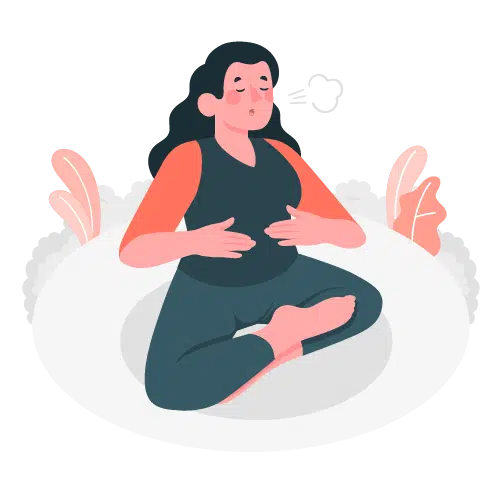
What is Breathwork?
Breathwork is a New Age term for various breathing practices in which the conscious control of breathing is said to influence a person’s mental, emotional or physical state, with a claimed therapeutic effect.
The basic idea of breathwork is to release toxins and stress when you breathe out and nourish your mind and body when you breathe in.
Research on breathwork is promising. Potential health benefits of breathwork include:
- Alkalizing your blood PH – Your blood pH should always be balanced. An increase in alkali (alkaline chemicals) is typically caused by an increase in bicarbonate, a drop in acid levels, or a decrease in carbon dioxide.
- Anti-inflammatory effect – Anti-inflammatory agents block certain substances in the body that cause inflammation. They are used to treat many different conditions.
- Elevating your mood – Breathwork can be used to elevate your mood. You may describe the feeling as high or ecstatic.
Breathwork may also have a positive impact on your central nervous system. When you feel stressed, your breath tends to become fast and shallow. This limits the oxygen entering your bloodstream. Your brain tells your body that there is a threat, and your body responds in fight or flight.
When you take time to slow down and purposefully breathe deeply and slowly, you tell your brain that everything is OK. Your brain communicates to your body that it’s safe to relax. The fight or flight response decreases, and your body can begin to function normally again.
What is the History of Breathwork?
Breathwork is trendy right now, but it’s not new. People have been practicing breathwork for thousands of years, and it has roots in yoga practice.
For centuries, people have sought spiritual awakening, self-healing, and meditative relaxation through breathing techniques.
Breathwork has roots in Eastern practices like yoga, Tai Chi, and Buddhism.
However, most of the breathwork therapy used today got its start during the consciousness-raising era of the 1960s and 1970s.
Several types of breathwork were formed during this era.
These included Holotropic Breathwork and Rebirthing Breathwork. Some models emphasized self-awareness and inner peace. Others dealt with altered states of consciousness and psychedelic effects.
Rebirthing Breathwork, for example, was developed by Leonard Orr. It focused on the traumatic experience of birth.
Holotropic Breathwork, established by Dr. Stan Grof and his wife, Christina Grof, grew out of their research on consciousness and the effects of psychedelic drugs like LSD.
Since the 1970s, the field of breathwork therapy has grown further.
In 1991, Jacquelyn Small founded Integrative Breathwork. This approach is based on her work in Holotropic Breathwork alongside Dr. Grof.
In addition, Clarity Breathwork, which evolved from Rebirthing Breathwork, was established in 1999. Clarity Breathwork expanded upon the principles of Rebirthing to include a more generalized approach to trauma and therapy.
I will get into these various forms of breathwork in greater detail in the next chapter which talks about the various breathwork techniques and practices.
This chapter was just to give you a basic summary on what it is and its historical influences.
Now let’s get into the various types of breathwork approaches.
Chapter 2:
Types of Breathwork Approaches
In general, the goal of any breathwork therapy is to support people in achieving a greater sense of self-awareness and capacity for self-healing. It also helps people work toward overall improvement in mental, physical, and spiritual well-being.
In this chapter, we will discuss some common benefits of breathwork along with exploring a few types of breathwork.
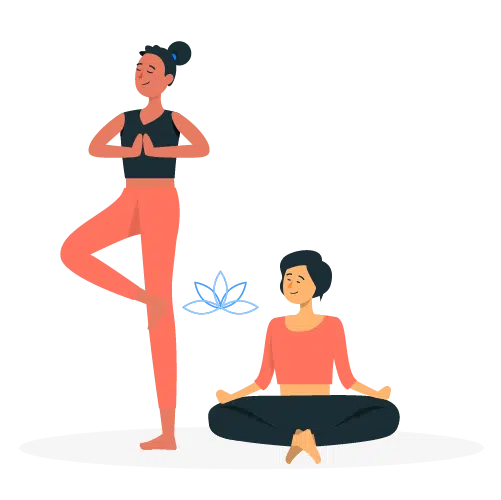
Common Benefits of Breathwork
Breathwork therapists, or Breath workers as they are sometimes called, guide participants through various therapeutic breathing techniques.
Breathwork therapy is thought to benefit people experiencing issues such as:
- Anxiety
- Chronic pain
- Anger issues
- Depression
- Trauma and posttraumatic stress
- Grief and loss
- Emotional effects of physical illness
There are several kinds of breathwork therapy available today. Many of these have similar foundations.
Let’s discuss a few well-known types of Breathwork.
Types of Breathwork
From holotropic breathwork to Clarity breathwork, we will be dwelling deeper into each and every one of them in this segment of the guide.
- Holotropic Breathwork
In this type of breathwork, the goal is to achieve “wholeness” of mind, body, and spirit.
Sessions are facilitated by certified practitioners who have completed the Grof Transpersonal Training program.
With the aid of “evocative” music and occasional bodywork, participants are guided through breath exercises while lying down.
This is meant to induce altered states of consciousness.
Holotropic Breathwork is often conducted with groups. This allows people to work in dyads and support each other’s processes.
Participants usually create mandalas related to their breathwork experience immediately after the group breathing exercises.
Sessions end with sharing and discussion. This helps participants integrate what they have learned about themselves.
- Rebirthing Breathwork
This type of breathwork is also known as Conscious Energy Breathing. It is based on the premise that all humans carry with them the trauma of their birth experience.
After allegedly re-experiencing his own birth in his bathtub, Leonard Orr was inspired to help others find the same inner peace.
The goal of Rebirthing is to help people release energy blockages that have been stored in the body and mind due to suppressed trauma.
In treatment, participants are asked to lie down, relax, and breathe normally. Through the use of “conscious connected circular breathing”, inhibitions surface. The tensions of past trauma are then illuminated.
Deep relaxation is used to promote brain waves that lead to the release of subconscious issues and pent-up energy.
- Clarity Breathwork
This type of therapy is based on many of the tenets of Rebirthing Breathwork. But it does not solely focus on the trauma of birth.
Clarity Breathwork addresses any and all issues that hinder the healthy flow of energy and breath. Clarity Breathwork is based on the idea that most people do not breathe to their full capacity. The main goal of a Clarity Breathwork Practitioner is to teach people how to breathe fully. This may release the emotional energy that keeps them stuck.
Therapy begins with an in-depth interview about present concerns and past experiences.
Sessions include in-depth intuitive counseling, somatic exploration, and one hour of circular connected breathing practice.
- Biodynamic Breathwork
Fully known as BioDynamic Breath and Trauma Release System, this modality integrates six elements.
It seeks to release tension, support natural healing, and restructure internal systems.
The categories of biodynamic breathwork are breath, movement, sound, touch, emotion, and meditation. This approach recognizes trauma is stored in both psychological and physical ways. Trauma may be stored through emotional patterns, chronic stress, and blocked energy.
Biodynamic breathwork aims to restore balance to these systems.
Treatment sessions might incorporate exercises like deep, connected breathing and revisiting ingrained memories and sensations.
It might also include music or sound therapy, vocalization, whole-body shaking, and even dance therapy.
Giten Tonkov, the founder of the BioDynamic Breathwork and Trauma Release System, says the therapy focuses on self-transformation:
“People become more capable of supporting others to do the same. It’s not a knowledge based on academics. It is based on creating space and relaxation in your physical body.”
- Integrative Breathwork
Integrative Breathing Therapy (IBT) is a comprehensive and evidence-based approach to breathing retraining and breathing therapy.
It aims to optimize the function of the airway by training nasal breathing, correct posture and improving muscle function.
It corrects
- hyperventilation
- breathing pattern disorders and
- stress-related breathing issues
by teaching you to breathe in ways that are more efficient, functional, relaxed and mindful.
- Shamanic Breathwork
The Shamanic Breathwork ceremony begins by establishing a safe and sacred space through various rituals and ceremonies such as smudging with sage, cedar, and sweet grass while offering prayerful invocations.
Individuals lie down and focus on surrendering to their Shaman Within, calling upon that which is most sacred and holy to them, such as spirit guides, power animals, and higher powers.
As the drumming begins, journeyers are invited to connect with rhythmic breathing and a chakra-attuned musical journey varying in length typically from one to two hours.
As the individual uses the power of deep connected breathing to create a naturally altered dreamlike state, the Ego defenses are released and the journey unfolds in a variety of magical ways.
- Vivation
Originated by Jim Leonard, Vivation is a physically pleasurable meditation and breathwork process you can learn to quickly and permanently resolve any kind of negative emotion, trauma or stress.
Vivation is a gentle yet powerful process that works by helping you experience the truth of your feelings as just physical patterns of energy in the body.
By directly connecting with your feelings at the physical level, negative thoughts about those feelings are bypassed, resulting in a much more honest and pleasurable experience.
This results in an integration of your feelings, transforming your experience from one of suffering to one of bliss.
- Zen Yoga Breathwork
Zen Yoga is a program that challenges you to realize your own potential by stretching, moving and breathing at your own pace.
It requires you to look within and acknowledge all of yourself.
It is not a competition. It is not a contest.
It is simply a path to feeling better and better.
Everyone yearns to be happy and healthy and to enjoy life to the fullest. Zen Yoga is simply an opportunity to become aware of the spiritual essence that exists within each of us.
- Transformational Breathwork
First and foremost, it is about breathing consciously and without pausing, into the abdomen area (diaphragmatic breathing) and through the mouth.
The encouraged technique is taking deep in-breaths and then letting the air out — without controlling the out-breath. Additionally to the breathing, facilitators use hands-on techniques throughout the breathing session, to locate tension points (i.e. places where energy is stuck) in the body of a practitioner.
By having specific energetic points on their body pressed while breathing, the practitioner is empowered to release tension — both on the physical and the emotional level.
On top of that, toning and pounding may be encouraged by the facilitators at certain points of a session. This also supports the releasing of charged energy (which we often interpret as “negative emotions”) and enables participants to express themselves freely.
Affirmations are often used by the facilitators to support adepts on their inner journey throughout a breathing session.
The group sessions I have experienced lasted around two hours — including preparation time, sharing intentions before breathing, the breathwork part itself and then the final relaxation which brings everyone “back to reality”.
Now that we know about the most common and widespread approaches in Breathwork, let us understand how to implement them and what are the steps to practice Breathwork effectively and correctly.
Chapter 3:
Different Types of Breathing Techniques
All forms of breathwork therapy are centered on the act of breathing in and out. But each model incorporates its own breathwork exercises.
Overall, breathwork exercises involve deep, focused breathing that lasts for an extended period of time. Let’s dive a little deeper into the different types of breathing techniques.
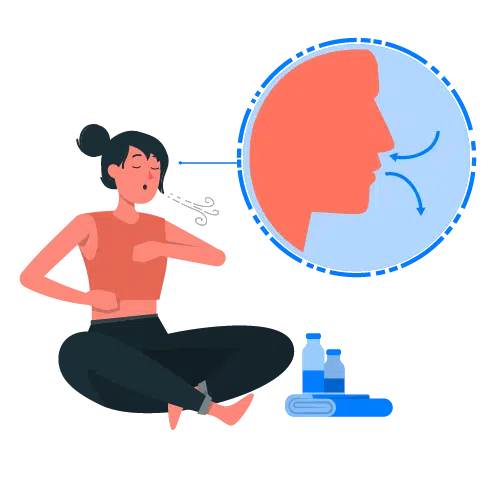
Box Breathing
Box breathing, also known as square breathing, is a technique used when taking slow, deep breaths. It can heighten performance and concentration while also being a powerful stress reliever. It’s also called four-square breathing.
This technique can be beneficial to anyone, especially those who want to meditate or reduce stress. It’s used by everyone from athletes to U.S. Navy SEALs, police officers, and nurses.
You may find it particularly helpful if you have a lung disease such as chronic obstructive pulmonary disease (COPD).
Before you get started, make sure that you’re seated upright in a comfortable chair with your feet flat on the floor. Try to be in a stress-free, quiet environment where you can focus on your breathing.
Keeping your hands relaxed in your lap with your palms facing up, focus on your posture. You should be sitting up straight. This will help you take deep breaths.
- Step 1 –
Sitting upright, slowly exhale through your mouth, getting all the oxygen out of your lungs. Focus on this intention and be conscious of what you’re doing.
- Step 2 –
Inhale slowly and deeply through your nose to the count of four. In this step, count to four very slowly in your head.
Feel the air fill your lungs, one section at a time until your lungs are completely full and the air moves into your abdomen.
- Step 3 –
Hold your breath for another slow count of four.
- Step 4 –
Exhale through your mouth for the same slow count of four, expelling the air from your lungs and abdomen.
Be conscious of the feeling of the air leaving your lungs.
- Step 5 –
Hold your breath for the same slow count of four before repeating this process.
Diaphragmatic Breathing
iaphragmatic breathing is a breathing exercise that helps strengthen your diaphragm, an important muscle that enables you to breathe. This breathing exercise is also sometimes called belly breathing or abdominal breathing.
Diaphragmatic breathing has many benefits that affect your entire body. It’s the basis for almost all meditation or relaxation techniques, which can lower your stress levels, reduce your blood pressure, and regulate other critical bodily processes.
Let’s learn more about how diaphragmatic breathing benefits you, how to get started, and what the research says about it.
How to practice Diaphragmatic Breathing?
Here’s the basic procedure for diaphragmatic breathing. It may be easiest to practice while lying on the floor when you first start.
- Sit or lie down on a comfortable, flat surface.
- Relax your shoulders, shifting them downward, away from the ears.
- Put a hand on your chest and a hand on your stomach.
- Without straining or pushing, breathe in through your nose until you can’t take in any more air.
- Feel the air moving through your nostrils into your abdomen, expanding your stomach and sides of the waist. Your chest remains relatively still.
- Purse your lips as if sipping through a straw. Exhale slowly through the lips for 4 seconds and feel the stomach gently contracting.
- Repeat these steps several times for the best results.
Pursed Lip Breathing
Pursed lip breathing is a breathing technique designed to make your breaths more effective by making them slower and more intentional.
You do this after inhaling by puckering your lips and exhaling through them slowly and deliberately, often to a count.
Pursed lip breathing gives you more control over your breathing, which is particularly important for people with lung conditions such as COPD.
How does pursed lip breathing work?
Pursed lip breathing should be practiced until it becomes second nature. It’s most effective when you’re focused or relaxed. Here’s how to practice.
- Sit with your back straight or lie down. Relax your shoulders as much as possible.
- Inhale through your nose for two seconds, feeling the air move into your abdomen. Try to fill your abdomen with air instead of just your lungs.
- Purse your lips like you’re blowing on hot food and then breathe out slowly, taking twice as long to exhale as you took to breathe in.
- Then repeat. Over time, you can increase the inhale and exhale counts from 2 seconds to 4 seconds, and so on.
4 – 7 – 8 Breathing Technique
The 4-7-8 breathing technique is a breathing pattern developed by Dr Andrew Weil. It’s based on an ancient yogic technique called pranayama, which helps practitioners gain control over their breathing.
When practiced regularly, it’s possible that this technique could help some people fall asleep in a shorter period of time.
How to do it?
To practice 4-7-8 breathing, find a place to sit or lie down comfortably. Be sure you practice good posture, especially when starting out. If you’re using the technique to fall asleep, lying down is best.
Prepare for the practice by resting the tip of your tongue against the roof of your mouth, right behind your top front teeth. You’ll need to keep your tongue in place throughout the practice. It takes practice to keep from moving your tongue when you exhale.
Exhaling during 4-7-8 breathing can be easier for some people when they purse their lips.
The following steps should all be carried out in the cycle of one breath:
- First, let your lips part. Make a whooshing sound,
exhaling completely through your mouth. - Next, close your lips, inhaling silently through your
nose as you count to four in your head. - Then, for seven seconds, hold your breath.
- Make another whooshing exhale from your mouth for eight
seconds.
When you inhale again, you initiate a new cycle of breath. Practice this pattern for four full breaths.
Alternate Nostril Breathing
Alternate nostril breathing is a yogic breath control practice. In Sanskrit, it’s known as nadi shodhana pranayama. This translates as a “subtle energy-clearing breathing technique.”
This type of breathwork can be done as part of a yoga or meditation practice. Alternate nostril breathing can also be done as its own practice to help you quiet and still your mind.
There are many variations of pranayama (breathing regulation). Anulom vilom and nadi shodhana are the most common types of alternate nostril breathing.
How to do it?
You can practice alternate nostril breathing on your own, but you may want to ask a yoga teacher to show you the practice in person so you can make sure you’re doing it correctly.
Focus on keeping your breath slow, smooth, and continuous. Focusing on your breath will help you to remember where you are in the cycle. You should be able to breathe easily throughout the practice.
To practice alternate nostril breathing:
- Sit in a comfortable position with your legs crossed.
- Place your left hand on your left knee.
- Lift right hand up toward nose.
- Exhale completely and then use your right thumb to close the right nostril.
- Inhale through the left nostril and then close the left nostril with your fingers.
- Open the right nostril and exhale through this side.
- Inhale through the right nostril and then close this nostril.
- Open the left nostril and exhale through the left side.
- This is one cycle.
- Continue for up to 5 minutes.
- Always complete the practice by finishing with an exhale on the left side.
Now that you know how to practice breathwork effectively and correctly, let us understand why we should do it by looking at the pros and cons of Breathwork.
Chapter 4:
Pros and Cons of Breathwork
There are many forms of breathwork therapy that involve breathing in a conscious and systematic way. Many people find breathwork promotes deep relaxation or leaves them feeling energized.
To be honest, there aren’t any cons of breathwork unless you are doing it incorrectly or are suffering from some physical illnesses. You should always have some guidance before you begin and do your necessary research.

Pros of Breathwork
Breathwork can help improve your well-being in many different ways. It serves as a quick, daily exercise that helps change your life for the better. To better understand the power of breathwork, here are some breathwork benefits that have been scientifically proven.
- Reduces Stress and Anxiety
One of the top benefits of practicing breathwork is decreased levels of stress and anxiety. Breathwork can be used to help users complete their stress cycle, helping to cancel out their fight-or-flight response following stressful situations.
Being a method of mindfulness, it also helps those feeling anxious ground themselves in the present moment while informing their nervous system that they’re safe.
Many studies have been done over the years to determine how breathwork can affect the body’s stress response.
A 1979 study from The Journal of Personality and Social Psychology proved that controlled breathing exercises could be used as an effective coping strategy in stressful situations.
A more recent 2016 study introduced a diaphragmatic breathing program to participants with anxiety, who demonstrated a reduction in anxiety scores after practicing the technique daily.
- Increases Energy and Boosts Immunity
Another top advantage to regular breathwork is the ability to increase your energy levels and boost your immune system.
Your immune system contributes greatly to your overall health (including your energy), and the way you breathe has more of an effect on it than we may realize.
Practicing breathwork exercises allows our bodies to bring in more oxygen, which fuels the cells that keep us healthy and energized.
Dr. Jeremy Montrose explains in a 2020 article how improper breathing will lead to a weakened immune system. Shallow breathing can result in the presence of stress, which triggers the sympathetic nervous system and increases our level of systemic inflammation. This all has a negative impact on our immune system. He also explains that poor breathing will also send unfiltered air directly into our throat and lungs. This can allow dust, bacteria, and other foreign substances to make us sick.
- Lowers Blood Pressure and Improves Circulation
Breathwork has also been proven to greatly improve your blood pressure.
It also can help improve your blood circulation throughout your body, and even help in the treatment of hypertension (high blood pressure).
This suggests that practicing breathing exercises regularly is a great natural method for helping to prevent heart disease.
According to Vital Heart & Vein, various blood and heart issues are caused by frequent activation of the sympathetic nervous system (the trigger for fight-or-flight mode).
Practicing slow, deep breathing exercises helps activate your parasympathetic nervous system, which will help decrease your heart rate and dilate your blood vessels.
This helps to reduce your blood pressure, as your body now knows it can relax.
- Helps Manage Pain
Deep breathing has also been credited as a popular method of pain management (including chronic pain).
This is because many breathing techniques help trigger the feeling of relaxation in stressful or uncomfortable situations, and following the instructions for these techniques also provide a method of distraction.
This makes breathwork contribute to a positive change in mood, which is beneficial for those experiencing physical pain.
A 2012 study published with the National Library of Medicine found that participants with chronic pain syndromes that practiced relaxing breathing techniques saw an increased ability to process pain.
The study also found that their stress levels were reduced, and they experienced a decrease in negative emotions.
- Strengthens Lungs
Healthcare professionals often recommend breathwork for those wanting to improve their lung health.
Everyone from athletes to the elderly can integrate these exercises into their daily routines and see improvements in their breathing capabilities.
Those with chronic lung conditions, like COPD and asthma, will greatly benefit from practicing breathwork.
A 2016 study of elderly smokers found that regular breathing exercises helped them to improve their lung capacity.
Those with a reduced chest diameter were able to strengthen their respiratory muscles and improve their oxygen intake.
This suggests that breathing exercises, especially those focusing on the diaphragm, can help gain back strength that might have been lost due to health conditions and other factors.
- Improves Mood and Self Esteem
Many use breathwork as a way to improve their mood and/or build their confidence, self-esteem, self-image, and self-love.
Those struggling with negative thoughts and feelings, especially self-directed ones, can use breathing techniques to help ground them in the present moment.
In addition, the relaxing sensations help to build a sense of peace. Breathing can help us feel happiness, joy, and gratitude, while also helping us to feel better about the way we see ourselves.
In a 2019 article, communication expert Russell Rowe explained that breathing exercises are ideal for helping people build confidence before public speaking.
He explains that when under stress, our bodies will release increased levels of cortisol. This can contribute to poor mood and anxiety if our stress cycles are not completed. Improving our breathing allows us to bring in more oxygen, which helps to reduce our cortisol levels and help us feel better.
- Releases Toxins
Another major health benefit of breathwork is its ability to help you release toxins in your body.
As we breathe throughout the day, we tend to breathe in everything bad that’s in the air: dust, bacteria, and various pollutants. Learning how to breathe properly allows us to help new toxins leave, while also alkalizing our blood’s pH level and helping us avoid a variety of health problems.
According to a 2020 article from Frequency, about 50% of the toxins we inhale are meant to be released when we exhale.
Deep breathing allows us to strengthen our diaphragm, allowing us to breathe in more oxygen and clear out more carbon dioxide.
It also helps improve our lymphatic system and generate more oxygen-rich blood, which assists in our body’s circulation.
- Improves Sleep
One of the other big reasons many are turning to breathwork is to help improve their sleep.
Regularly practicing breathing exercises can help regulate your energy levels so you can properly fall asleep.
Many exercises can also help you settle down for the night, or quickly fall asleep, on nights when you’re having difficulty doing so.
Breathwork is one of the top recommended natural sleep aids, and can also be helpful for those struggling with insomnia.
A 2018 study determined that self-regulated breathing was successful in helping participants with insomnia relax and fall asleep.
It also suggested that breathing exercises proved to be a better method of treating insomnia than other pharmaceutical methods.
This helps to suggest that breathwork is a powerful tool for helping users achieve a peaceful night’s sleep.
- Helps Manage Depression
Breathwork has also proven to be effective, when paired with other treatments, at helping people manage their depression.
Its ability to alter one’s mood and help ground people in the present is incredibly helpful in working to improve emotional well-being and practice gratitude.
Many advanced breathwork methods focus on healing, which can also be very therapeutic for those struggling.
A 2016 study conducted by the Perelman School of Medicine at the University of Pennsylvania found that participants with severe depression saw improvement after practicing Sudarshan Kriya yoga, which incorporates Pranayama breathwork.
These participants had not been fully responding to their prescribed antidepressants, and they found that this type of activity was effective as an add-on for their treatment plans.
The study concluded that there was enough evidence to support the idea that yogic breathwork techniques, like Pranayama, could be used to help manage symptoms of depression.
- Increases Muscle Tone
Many athletes have turned to breathwork due to its ability to help increase muscle tone throughout the body.
It’s also a great way to focus on strengthening your diaphragm as a method of improving your breathing.
Practicing breathing exercises regularly can help increase your strength all around, making physical activities – and breathing during them – easier to do.
In a 2021 article, Parsley Health explains that breathwork’s impact on our blood is what helps to increase our muscle tone.
When our blood is alkalized, it builds upon our sensory and motor neurons.
This helps to smooth our muscle contractions and achieve more movement from the muscles throughout our body.
- Helps Heal From Trauma and Manage PTSD
Those looking to reflect on their past trauma or learn a new way to manage their PTSD will benefit greatly from practicing breathwork.
Breathwork’s ability to help us relax makes it great for dealing with trauma triggers or highly stressful emotions as they arise.
Many advanced breathwork methods can also be used as guided healing experiences.
This makes them useful for those who want a mindful way to move forward with their lives.
A 2014 study found that Pranayama was successful in helping US veterans manage their PTSD symptoms.
The results of the study showed that those who’d practiced this form of breathwork saw fewer symptoms and lower rates of distress and anxiety.
Several participants continued the practice for years following the initial study.
- Improves Digestion
Those who struggle with digestion will also benefit from regular breathwork. If you’re dealing with digestive problems – including constipation, diarrhea, and IBS – breathing exercises can help.
They relax you and get your blood circulating enough to help improve all of your bodily functions.
They’re also effective whether your digestive issues are random or occur regularly.
Frequency explains in their 2020 article that breathwork can help with the digestive process, as it increases the blood flow throughout your digestive tract.
Also, since breathwork helps to reduce stress, this allows your body to reduce your cortisol levels.
This, in turn, helps decrease your levels of gut inflammation.
Reducing your stress and anxiety levels will also help you to make smarter food choices that will be kinder to your digestive system, rather than those you might choose to eat while struggling to relax.
- Helps to Overcome Addictions
Breathwork has also become more common as a therapeutic tool for treating addiction, especially when paired with 12-step programs or other varieties of therapy.
Breathing exercises and techniques are great at helping users achieve a sense of calm and focus that can help them fight cravings.
Many say they achieve a great sense of control and self-awareness when practicing breathwork regularly.
A 2011 study published in the International Journal of Mental Health and Addiction found that Holotropic Breathwork was successful in helping participants abstain from alcohol and other addictive substances.
It was also helpful in helping the participants manage their depression, anxiety, and/or trauma associated with their addiction.
The study notes that it is not the only one to validate the success of Holotropic Breathwork for treating addiction, especially when combined with cognitive-behavioral therapy, 12-step programs, and other methods of treatment.
- Improves Focus
Those who struggle with their level of focus have also turned to breathwork. Practicing breathing techniques when you’re struggling to pay attention can help increase your attention span. It can also calm any emotions that are distracting you the most.
A 2018 study by Trinity College Dublin found that mindfulness exercises like breathwork were effective in helping improve the attention spans of those with poor focus.
Research showed that there was a correlation between the level of focus and the quality of one’s breathing, so breathwork could be used to help those struggling make this improvement.
This is because breathing impacts the chemical messenger noradrenaline, which plays a role in how our brain perceives our work and how well we can give it our attention.
- Increases Creativity
Breathwork is also big among artists and other professionals for its ability to help them create.
Regular breathing exercises can be a crucial part of a creative’s routine, as it allows them to relax and clear their mind.
This lets new ideas begin to develop and flow.
It’s also incredibly helpful for situations where people need to problem-solve.
A 2014 study published by Behavioral and Brain Functions suggested that short-term meditations could assist participants in the completion of creative tasks.
Upon completion of the breath-focused meditations, participants were more able to engage in emotional, creative tasks than those who hadn’t practiced the meditations.
A 2017 article from the Harvard Business Review also suggests that practicing 10 to 12 minutes of mindfulness meditations increases employees’ creative thinking. This helps them perform more creative and innovative work tasks.
There are many more benefits of breathwork that I have missed out on, but this article would be too long if I were to incorporate them all.
Now that I have told you about the pros of Breathwork it is only fair to tell you about the cons or the possibility of it going wrong if done incorrectly.
So here goes.
Cons of Breathwork
You can experience side effects of breathwork if you are not careful. This section will cover some things you need to be cautious about.
- Hyperventilation
If you’re new to breathwork, more challenging techniques may lead to hyperventilating. This is dangerous because you may also experience:
- Dizziness
- Tingling in your hands, arms, feet, or legs
- Irregular heartbeat
- Muscle spasms
- Change in vision from lack of oxygen
- Ringing in your ears
In rare cases, lack of oxygen to your brain may cause permanent damage.
Effectiveness.
Breathwork requires focus, so it can take time to develop your ability to concentrate on the techniques.
If you’re distracted during a breathwork session by noise and happenings around you, breathwork may not be as effective.
Breathwork was practiced by millions of people during the Covid 19 Pandemic and became extremely popular. By now you may have an idea as to why that is, but how did it happen?
Let’s find out in the next chapter.
Chapter 5:
Breathwork Going Mainstream in the Covid Era
We are living in a time when breath has never felt more sacred becoming eerily significant as a respiratory virus ravages the globe.
Almost concurrent with the spread of COVID, the practice of breathwork has gained momentum and entered the realm of pop culture.
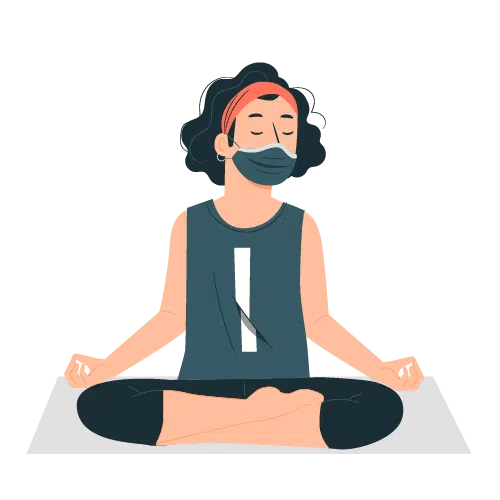
How did breathwork leap into pop culture?
The Goop Lab with Gwyneth Paltrow debuted on Netflix in late January 2020, a few weeks before the world shut down. The Goop Lab, Gwyneth Paltrow and employees at her wellness and lifestyle company Goop “explore ideas that may seem out-there,” like psychedelic drugs, Wim Hof‘s cold therapy, female sexuality, anti-aging diets, “energy” healing and communication with the dead.
In a popular episode highlighting Dutch extreme athlete Wim Hof’s soft belly breathing and cold-resistance training for physical and psychological healing, we watched from the comfort of our couches as Goop employees plunged into a freezing-cold lake.
The Wim Hof Method combines breathing, cold therapy, and commitment to help you connect more deeply to your body. It involves powerful inhalation, relaxed exhalation, and prolonged breath holds.
By the time Justin Bieber called him a “G” on The Ellen DeGeneres Show in December 2020, and reported DM-ing with him on Instagram (as one of his 1.6 million followers), the self-proclaimed “crazy Dutchman” was practically a household name.
Jasmine Marie, founder of Black Girls Breathing has specifically sought to center Black women in the conversation around the healing power of breathwork. Breathwork had gone mainstream, practiced by influencers and spiritual seekers alike.
But breathwork is hardly new.
A particular reverence for the breath as a conduit of life force energy goes back thousands of years in spiritual traditions and Eastern practices; breathing through the physical postures is a critical component of yoga while counting your breaths is the backbone of certain meditative traditions.
“Most breathing practices come from ancient yoga traditions and are based on pranayama, which means ‘the regulation of the breath through certain techniques and exercises,’” says Jay Bradley, founder of BreatheOnIt and Chakra Balms, who teaches a three-part, circular breath technique.
The draw of the practice largely comes down to the transformational potential a practice has on the mental state.
Regular practitioners claim mental improvements such as overcoming depression, managing addiction, and/or having a more compassionate self-view. But even in our modern world, the spiritual component cannot be ignored.
“The depth of practice, experience of the practitioner, and the trust and willingness of the person are what can elevate a simple technique to a whole other level of sacredness, even in a less typical-seeming, spiritual context,” explains Erin Telford, a breathwork instructor.
For the skeptics: Medicine also confirms claims of its physical benefits.
“There are so many studies that show deep breathing is one easy, accessible practice that can help to balance the mind and body, and reduce the stress response,” says Mark Hyman, M.D., a 13-time New York Times best-selling author and the head of strategy and innovation at the Cleveland Clinic Center for Functional Medicine.
“Breathwork has been shown to increase parasympathetic activity, heart rate variability, physiological flexibility, [and] is one of the greatest tools I have in my medical toolbox to help individuals manage stress, [which] has become an epidemic in our society.”
Now, let me tell you where a coach comes into the picture.
Let’s understand Breath Coaching.
Chapter 6:
What is Breath Coaching?
Breath Coaching is a multidisciplinary system. It is a combination of behavorial science, respiratory science, coaching and breathwork.
What is done in Breath Coaching sessions may look like breathwork sessions but it is not just that. This chapter will explore what breath coaching is all about.

What does a Breath Coach do?
Breath Coaches use basic Breathwork techniques where people lie down and breathe from the mouth deeply, take full connected breaths in and out and go into an awareness journey.
Breath coaches analyze your breathing habit while you’re breathing real deep from your mouth and find out whether your breathing is normal or dysfunctional.
If you’re confused as to what breath coaches really do, I empathize because even I didn’t fully when I first learnt about them.
So, in order to better understand who a breath coach is, let me first explain to you what breath coaching does not entail.
What Is Not Breath Coaching?
Breath coaching is now confused with breathing technique systems.
First of all, let’s define what it is not:
- Breath Coaching is not a technique and it cannot be ‘’taught’’ by one instructor coming up on stage and explaining it.
- Breath coaching sessions cannot be performed alone.
- Breath coaching is not a doctrine.
- Breath coaching is not therapy.
- Breath coaching cannot be performed by learning from a book.
What happens in a Breath Coaching Session?
Breath Coaching is a system that analyzes breathing as a form of behavior. Breath Coaches analyze the breath, find out the dysfunctional breathing habit and coach the clients in learning new habits.
Most of us learn dysfunctional breathing habits in our childhood as a form of self-developed behavior.
Breath coaching sessions are studies where the breath is analyzed while the client breathes deeply from their mouth.
Taking deep breaths is not only necessary but also very much needed for the breath coaches to see what’s going on wrong with the breath.
After analyzing the breath, the breath coach coaches the client using different, necessary systems such as body mapping, reverse breathing or over-breathing.
Breath coaching sessions must be live, face-to-face sessions. During breath coaching sessions, the breath coach actively works on the body with his / her hands while analyzing the breath mechanically, using affirmations throughout the session.
The breath coach analyzes the breath by using a special (educational) capnography, EMG and HRV system and starts working with the breath mechanically afterwards.
Breath coaching sessions last at least 1,5 hours. While lying on a mattress and the eyes are closed, the session continues with the accompaniment of music and the coach.
Breath Coaching is a CCE-accredited coaching system. The dysfunctional breathing habits are identified through chemical, cellular, biological, physiological and mechanical analysis systems.
Breath analysis has to be done during breathing from the mouth mechanically and using educational capnography, EMG, and HRV system on a deeper level.
The breath coach works at the physical, emotional and psychological levels so the breath coach should have the knowledge and equipment necessary for these studies.
Useful Resources
- Here is The Breathing App to keep you informed on how you are breathing and about your heart rate etc.
- Learn how to breathe with Breathwork App.
- Here is Othership, a guided Breathing App.
- Breathe is an app designed to watch your breath.
- Prana Breath is an excellent app to practise various kinds of breathing techniques.
- Here is a Breathwork Teacher Training Certificate Course on Udemy.
- Here is a Course on Breathing Techniques on Udemy.
- Here is The Alchemy of Breath Course to master and perfect your breathing techniques.
Conclusion
Congratulations on finishing the definitive guide on Breathwork!
Now you have all the tools you require to understand Breathwork, how to effectively use it and how it can benefit you at work and in your personal life.
But don’t just stop here; start implementing all that you have learned right away. The time to start making the necessary changes in your life is now!
Remember: consistency is key to the journey of becoming a powerful and more importantly, fair person. Nothing happens in a day.
What did you find most useful about this Definitive Guide?
What steps are you going to take now towards your journey?
Let me know your thoughts in the comment section below.

Download a FREE PDF version of this guide…
PDF version contains all of the content and resources found in the above guide.


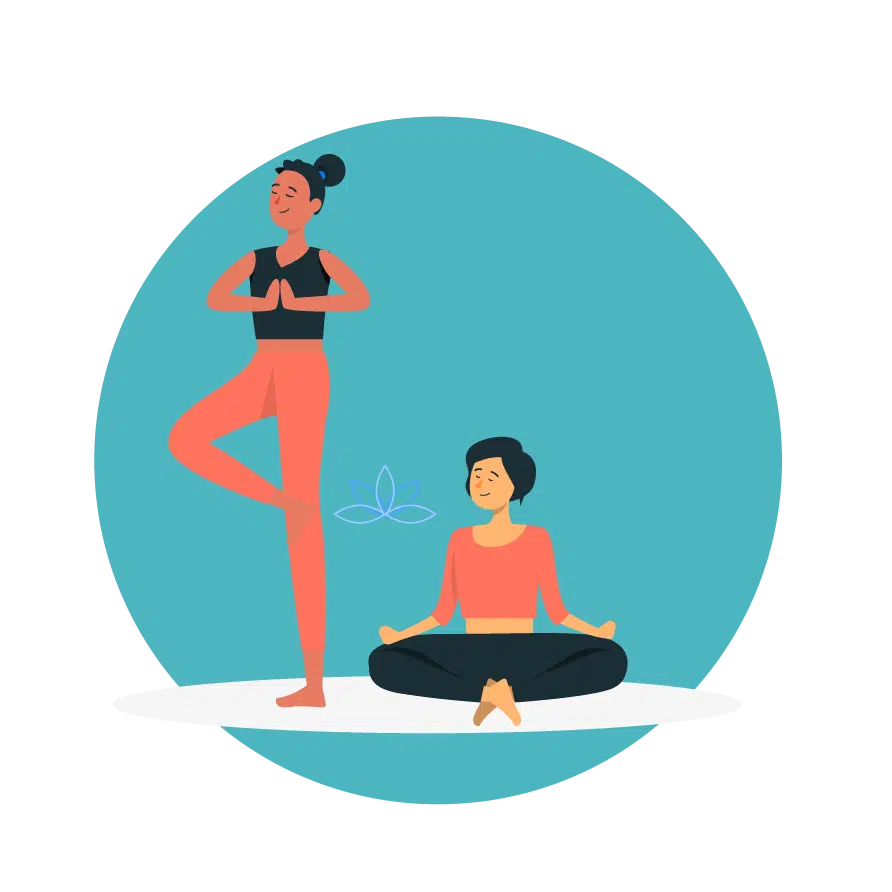
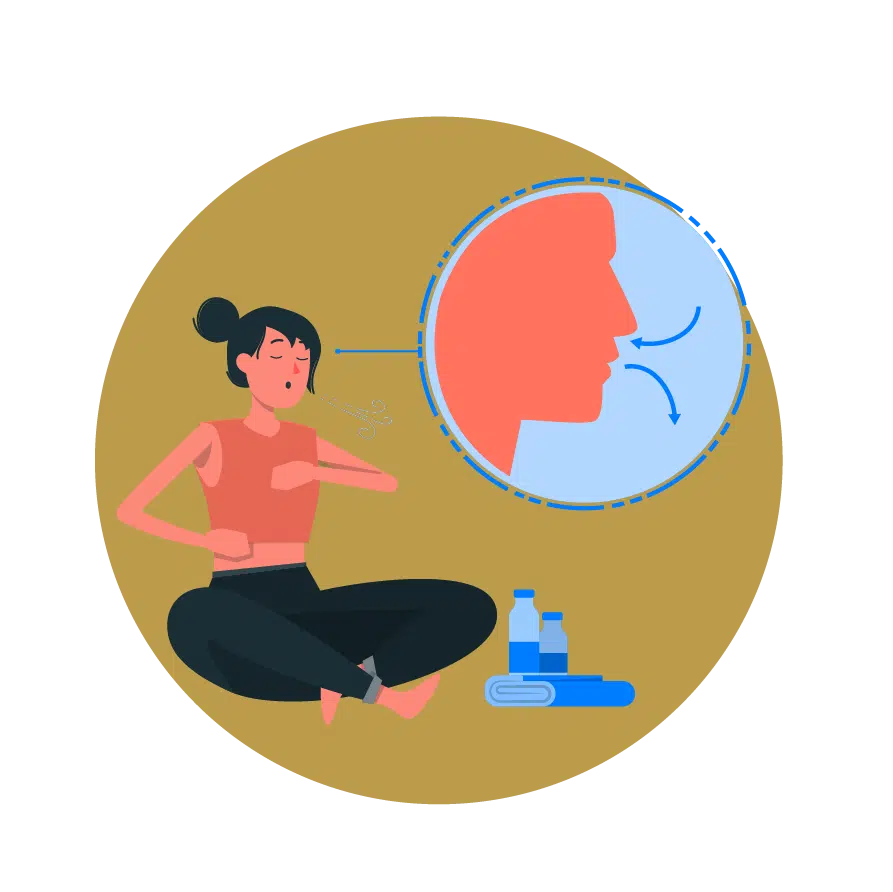

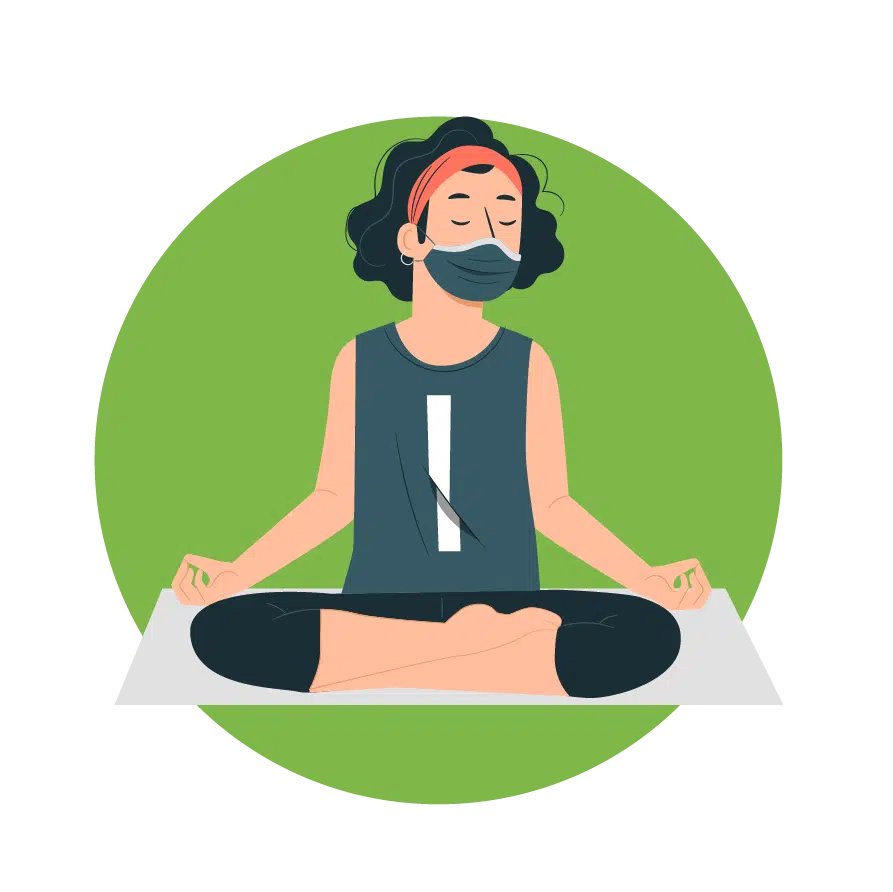

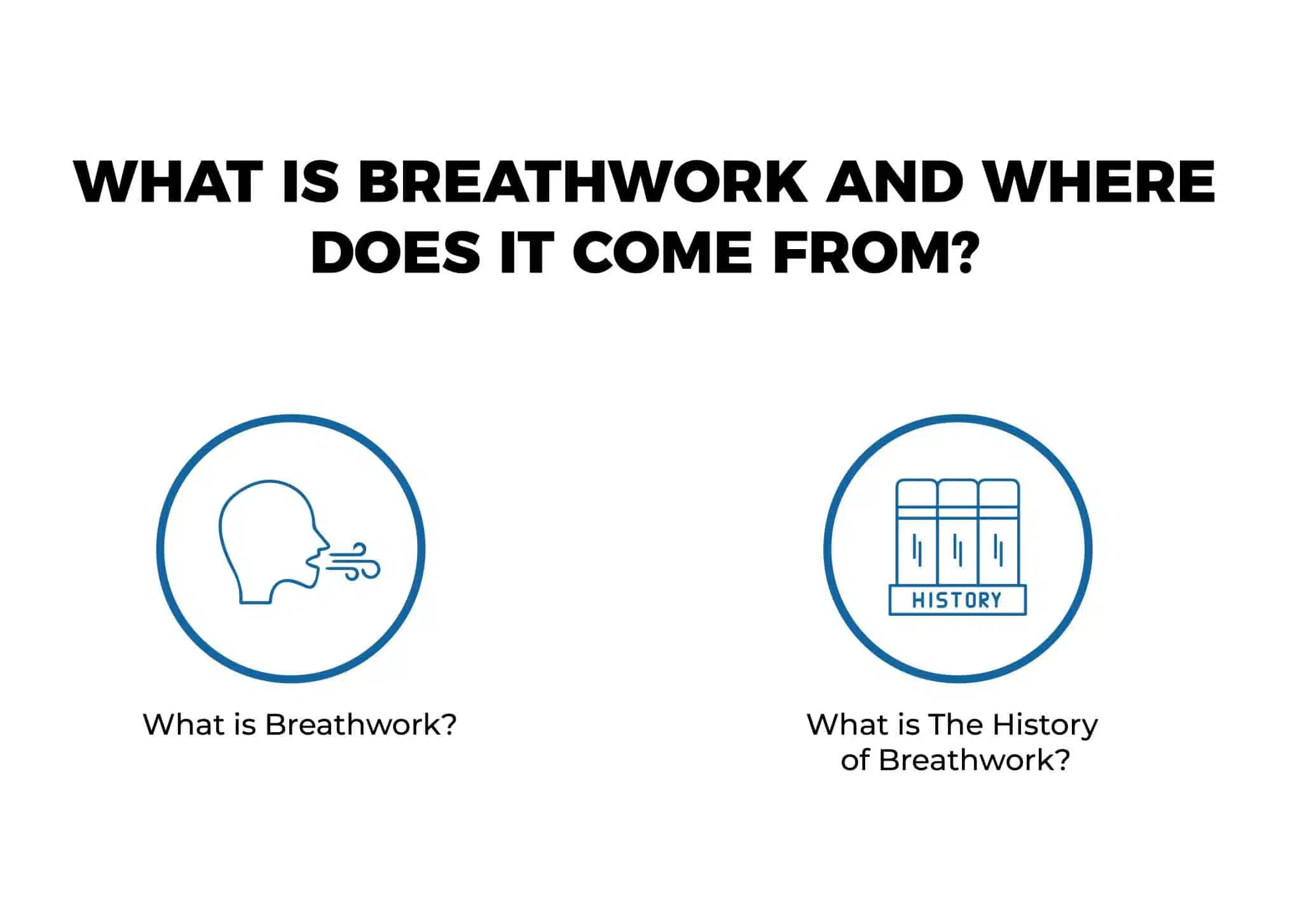


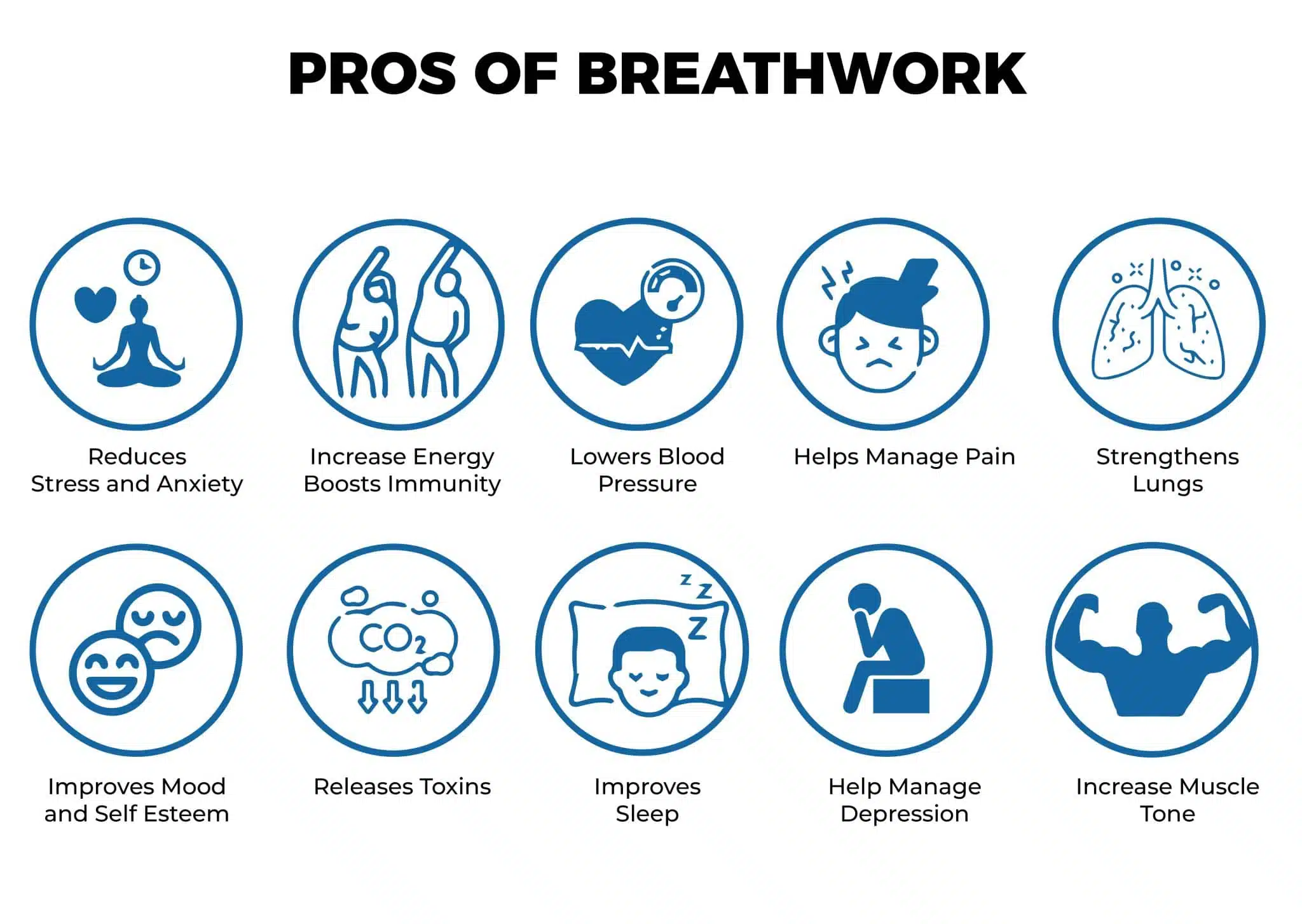
ABOUT SAI BLACKBYRN
I’m Sai Blackbyrn, better known as “The Coach’s Mentor.” I help Coaches like you establish their business online. My system is simple: close more clients at higher fees. You can take advantage of technology, and use it as a catalyst to grow your coaching business in a matter of weeks; not months, not years. It’s easier than you think.
AS SEEN ON
0 Comment